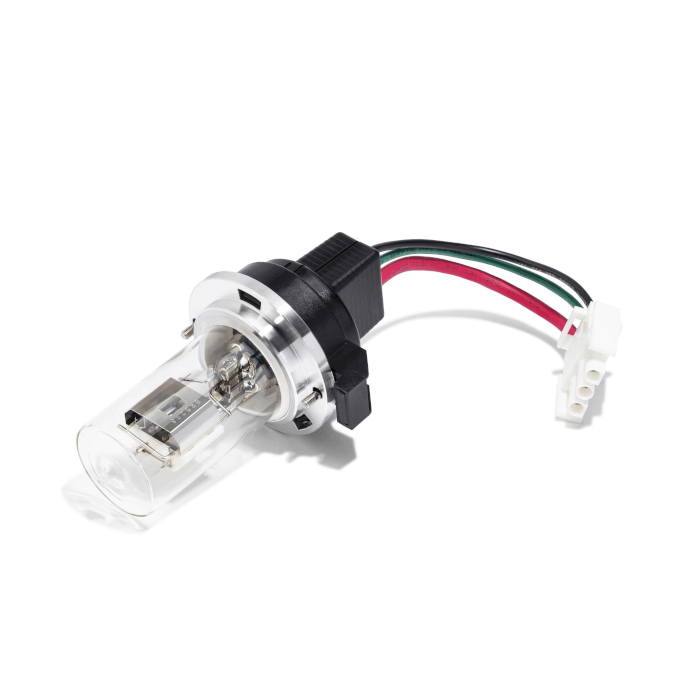
Agilent HPLC Detector Lamps
Agilent's lamps are manufactured in an ISO 9001 certified environment and are fully traceable throughout every step of the production process. Each lamp is then tested to ensure it meets Agilent's performance specifications. Test equipment is regularly calibrated using optical standards certified by NIST (National Institute of Standards and Technology) or PTB (Physikalisch-Technische Bundesanstalt).
The reliability of your liquid chromatography can suffer when inferior lamps produce inconsistent intensity. Noisy baselines result in wasted troubleshooting time, while frequent lamp replacements can lead to higher long-term costs
What makes Agilent lamps so different?
- Optimum performance − rigorous testing for noise and drift specifications, correct operating voltage, light intensity, and proper alignment ensures best performance
- Longer life − long-life deuterium lamps provide 50 % longer lifetime for more than 2,000 hours of use, due to our improved coating process
- Higher signal-to-noise ratio − the narrower aperture is designed to provide increased light intensity, decreased noise and lower limits of detection
- Higher analytical sensitivity − by providing greater analytical sensitivity, long-life Deuterium lamps can extend detection capabilities and improve qualification at trace levels
- Reduced downtime − InfinityLab lamps with RFID provide critical information and full usage traceability for planned maintenance, easier troubleshooting and lower cost of ownership
Manufactured in an ISO 9001 certified environment, Agilent lamps are rigorously tested and fully traceable throughout every step of the production process.
Non-standard LC lamps can result in inconsistent light intensity, noisy baselines, system downtime, and higher costs. To ensure LC system accuracy, reproducibility, and reliability, turn to Agilent Certified Deuterium Lamps – built to exacting ISO 9001 standards. Agilent lamps are different because they deliver:
- Optimum performance – through correct operating voltage, consistent light intensity, and proper alignment
- 50% longer life – for more than 2,000 hours of use
- Higher signal-to-noise ratio – with a much narrower aperture that provides increased light intensity and decreased noise
- Higher sensitivity – extending detection capabilities at trace levels
- Turn the Deuterium lamp OFF in the User Interface.
- The lamp is accessible from the front of the detector and is located on the left side.
- Remove the front cover and unscrew the protecting plate if one is in place. The lamp is now visible.
- Warning: If the detector has been in use the lamp may be hot.
- Disconnect the connector and open the two screws located on the lamp. The lamp can now be removed.
- Install a new lamp in the detector. A pin on the lamp helps to position the lamp correctly. Caution: Do not touch the glass bulb. Any deposit in the lightpath can affect the performance of the lamp.
- Use the two screws on the lamp to fix it on the chassis.
- Reset the lamp counter in the User Interface.
- Turn the lamp ON and wait 10 minutes to warm-up.
- Perform the lamp tests using the Agilent Lab Advisor Software.
How to test
• With: “Intensity test” and “Wavelength verification and calibration” on the Agilent Lab Advisor Software.
Intensity test measures the intensity of the lamp over the full wavelength range to evaluate the intensity spectrum. The shape of the intensity spectrum is primarily dependent on the lamp, grating, and diode array characteristics. Therefore, intensity spectra will differ slightly between instruments.
Wavelength verification and calibration of the detector is done using the zero-order position and the alpha, beta emission line of the deuterium lamp.
• When: Each time a lamp is replaced; after detector maintenance; when lamp does not ignite; or generally when noise or drift exceeds application limits. The typical lifetime for a lamp is 2,000 hours and we recommend testing the lamp at least every 3 months.
Note: If test fails, ensure the detector has been properly optimized. If the problem persists, the lamp needs to be replaced.

